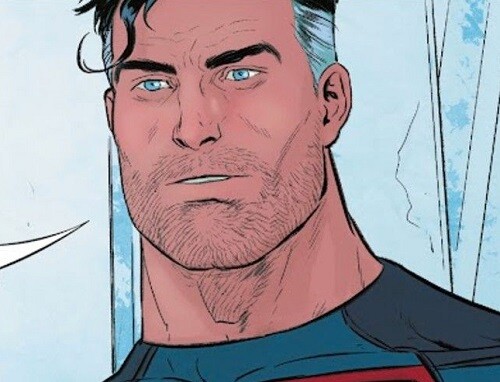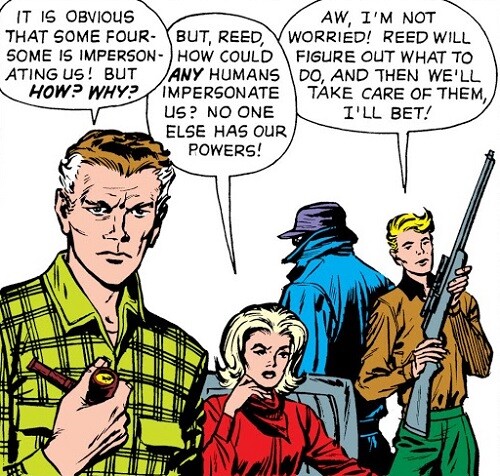In Marvel And DC Comics, Grey Hair Is Never Just Grey Hair

Recently, we told you about DC's decision to let Superman age in real-time and their subsequent decision that, actually, that's dumb, let's not do it. Those patches of grey hair that suddenly popped up on his head? Those are there now because, uh, he was hit by energy from another dimension or something, yeah. We made fun of DC for bending over backwards to explain a character's uneven hair color, but it turns out this is a comic book industry tradition that goes back almost half a century.

DC Comics
Even Stan Lee himself played the "unnecessary grey hair retcon" card at least once. In the early issues of Fantastic Four, Reed "Mr. Fantastic" Richards was clearly meant to be much older than the rest of the team, hence the grey hair on his temples, his fondness for grandpa pipes, and the fact that the thought "Mr. Fantastic" was an acceptable superhero name.

Marvel Comics
But then, Lee and co-creator Jack Kirby began treating Richards like a younger man -- for one thing, it's established that his sperm still has quite a bit of mobility. So, which wacky sci-fi concept did they use to explain his grey temples? Cosmic rays? White plastic bands growing out of his skull? Neither: the official explanation is that his hair turned white ... due to the horrors he witnessed at the end of World War II (16 years before the first issue of Fantastic Four). BREAKING NEWS: Fantastic Four comics are now banned in Tennessee.
Something similar happened decades later when DC tried to make Hal Jordan, the main Green Lantern, look a little more mature and distinguished by letting his hair grey up a bit. This was a futile endeavor, because he still had to share a comic with a guy who looked like Carrot Top fused with Moe from the Three Stooges.

DC Comics
Hal ditching his Just For Men (tm) shampoo somehow failed to motivate kids to pick up the Green Lantern comic. The poor sales led to a radical revamp where our brave hero murders a bunch of his friends and turns into a villain called Parallax. About a decade later, DC figured it was time to turn Hal into a good guy again and de-age him while at it. The grey hair? This time, it was a side effect of being possessed by the cosmic parasite who made him do all those bad things.

DC Comics
Another example is Rogue of the X-Men, who was originally introduced as a middle-aged Avengers villain who looked like she's hated and feared by everyone at her PTA meetings.

Marvel Comics
But then, they started writing Rogue as if she was on her late teens or early 20s, and her old lady streaks became a stylish lock of hair on her forehead. This look became so iconic that the first X-Men movie devoted its climax to explaining why it's there.
What about Dr. Strange? As far as we know, Marvel hasn't tried to explain his white streaks via magic or something, but they did tell the artist to get rid of them for a while, which is kind of like erasing Spider-Man's webs or Batman's pointy ears. Stop messing with superhero hair, guys. Or at least say it was dandruff all along to make them more relatable.
Follow Maxwell Yezpitelok's heroic effort to read and comment on every '90s Superman comic at Superman86to99.tumblr.com.
Top image: Marvel Comics, DC Comics